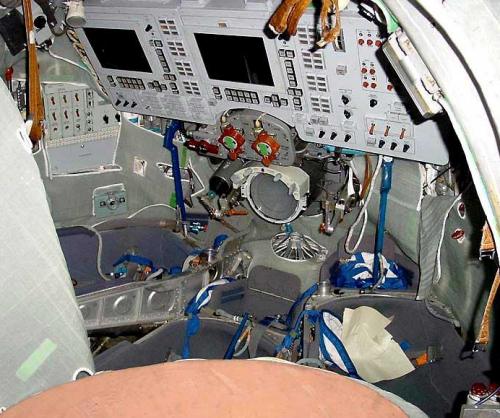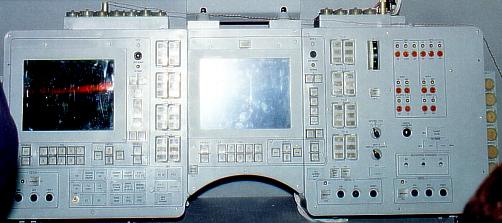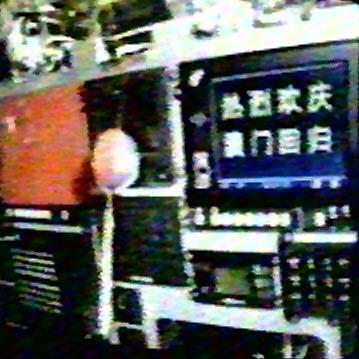While I was in Star City in the summer of 2000, I got the chance to sit in the TM series trainer, which was being phased out for the newer TMA, in which Sheperd, Gidzenko and Krikalev were training at the time.

The first thing I noticed was that the old landing instrument from the original Soyuz series was still present! Up there on the top right of the instrument panel you can see a little globe behind glass. The globe is probably about 10 cm across, making it about 1:1,274,200,000 scale.

The way the original crews predicted their landing zones was to peer out the window until they saw a feature they recognized, rotate the globe to that feature, and then use the Vzor periscope (the green screen in the center, between my legs, the Commander's position) to right the craft and recognize the precise moment when the craft was over the feature. The Commander then relayed this to the Navigator in the right seat, who pressed a button, releasing a mechanical clockwork spring, rotating the globe to the predicted landing site. Bzzzzt-ting!

Photo (c) Mark Wade
Now, each line on the crosshair is probably about 0.5 mm across. At this scale, that is about 640 km across. Combined with sighting errors in the periscope and the timing of button pushes, this probably means they had an CEP of over 1000 km! No wonder the Russians have such an amazing search and recovery network -- and no wonder why they couldn't find a few of the re-entering crews. In 1965 Voskhod 2 overshot by about 2000 miles, and landed in a forest in the Urals. Belyayev and Leonov had to spend the night with a circling wolf pack, and then cut down trees the next day so that the rescue helicopter could land. Sawn-off shotguns thereafter became standard issue in the survival pack. In 1976, Soyuz 23 landed in a marsh, on the edge of Lake Tengiz, in the middle of a blizzard. The search crew was surprised to find Zudov and Rozhdestvensky alive.
Re-entry is still not quite predictable, when you are riding on a bolide - Bowersox, Pettit and Budarin landed 450 km short of their predicted landing area last May, and were "lost" for over two hours. We shall see if they fly again -- Scott Carpenter was permanently grounded after his 400 km overshoot in Mercury 7 in 1962...
The Soyuz TMA series have a glass cockpit, replacing a lot of the analog equipment from the TM series, as can be seen here:


Photos (c) Mark Wade
It is interesting to see and compare the Shenzou cockpit with the TM & TMA series - this photo is a grainy frame from a Chinese video, which shows a pretty fundamental difference:

Photo (c) Mark Wade
A good source for much data on space programs and vehicles is the Encyclopaedia Astronautica.